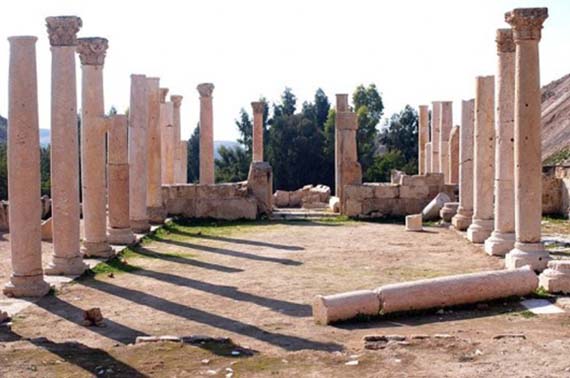Pella
Pella is exceptionally rich in antiquities, some of which are exceedingly old. Besides the excavated ruins from the Greco-Roman period, Pella offers visitors the opportunity to see the remains of Chalcolithic settlement from the 4th millennium BC, evidence of Bronze and Iron age walled cities, Byzantine churches, early Islamic residence and a small medieval mosque. Excavations have only touched the surface; most of Pella has still not been discovered.
History
The experts believe that the ancient city of Pella, known in Arabic as Tabaqat Fahl, was inhabited since the Neolith age, as early as 5000 BC. The strategic position close to numerous water sources springs from the Wadi Jirm el-Moz made it an ideal settlement area over the centuries.
Cited in Egyptian texts under the name of Pehel Fahl, it was renamed Pella in 310 BC by the Greeks. The name Pella was chosen to honour the name of the Macedonian city that gave birth to Alexander the Great. During the Greek rule, Pella was a prosperous city famous for the ceramic trade. The fortune of the city continued during the Roman period and Pella was one of the most flourishing cities of the Decapolis. It remained an important commercial centre also under the Umayyad dynasty, but the devastating earthquakes that destroyed the region in 746 AD marked its inexorable decline. Abandoned for centuries it has been studied and turned into an important archaeological site only in the seventies after excavations made by a group of American and Australian archaeologists.
Touring Pella
Pella archaeological park contains the remains of the Roman settlement along the waterway, as well as buildings from the Byzantine era, caves, and the Neolithic village. Arriving at the site you can immediately see the remains of the western church, dating back to the sixth century. On the adjacent small hill, there are traces of a small mosque built long after the earthquake of 749 AD destroyed the city. On the same hill, buildings from the Umayyad period are also visible. The higher part of the hill hosts ruins of settlements dating back to the Iron Age and the Bronze Age. Moving downwards, near the watercourse, there are the remains of Roman baths and a large church dating back to around 400 AD that was probably intended to be the city’s cathedral. On a high relief in the east part of the city, there are ruins of a church, also dating back to the 5th century, while the Tell al-Husn hill contains the necropolis and remains to date back to the Iron Age and Bronze.
At Pella visitor can enjoy the only museum in Jordan dedicated to geology and palaeontology. The museum aims at becoming a focal point for the study of natural heritage and its prehistoric past of Jordan, from 500 million to 250,000 years ago.
Another highlight is Pella Resthouse, a delightful resort with outdoor seating and an astonishing view dominating the Jordan valley and the ruins.

